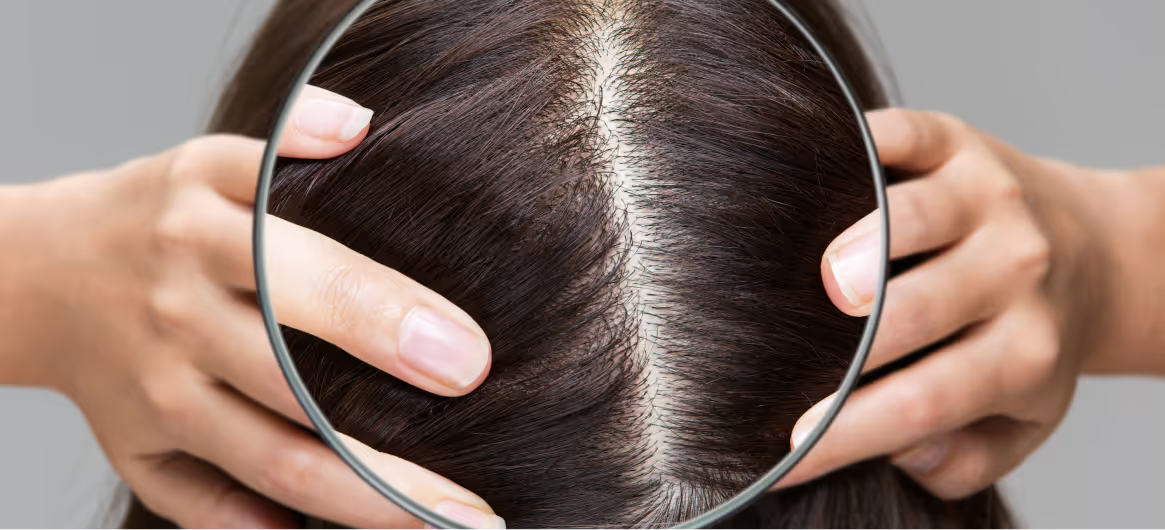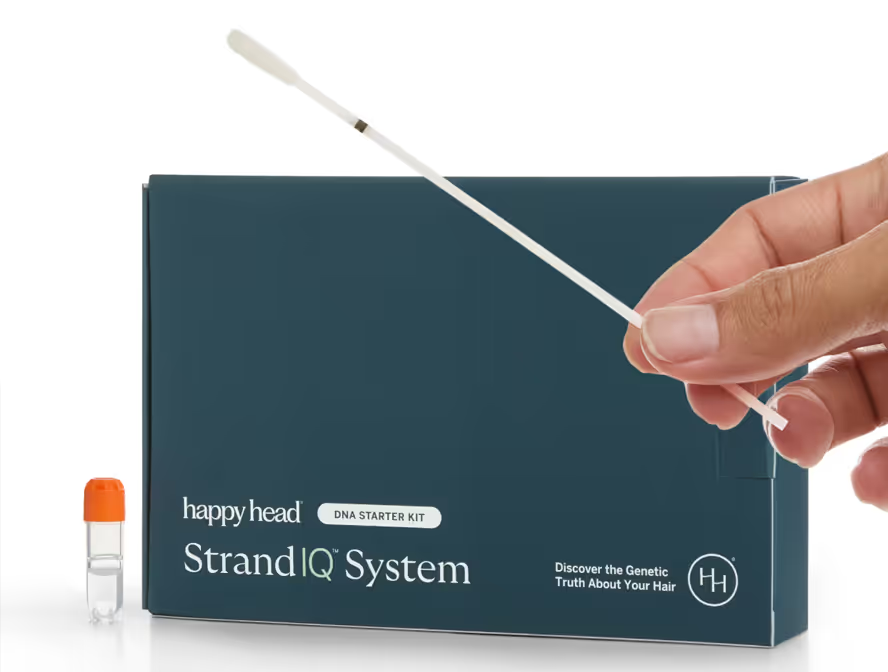Air pollution isn’t just damaging to your lungs—it affects your skin and scalp too. In fact, emerging research shows that living in polluted environments may dramatically accelerate scalp aging, inflammation, and even hair loss.
According to the Chinese Dermatologist Association, individuals living in urban areas may experience signs of aging up to 10 times faster than those in rural regions.
But not everyone responds to environmental toxins the same way. Your genetic profile may be a major factor in determining how well your scalp can detox harmful compounds from pollution. If you've been wondering why your scalp feels dull, irritated, or reactive despite good hygiene, your DNA might hold the answer.
The Genetics of Scalp Detoxification
Your body uses two critical enzymes—EPHX1 and NQO1—to neutralize toxic environmental byproducts:
- EPHX1 (epoxide hydrolase 1) – This enzyme detoxifies harmful epoxides, which are found in industrial emissions, cigarette smoke, and car exhaust.
- NQO1 (NAD(P)H:quinone oxidoreductase 1) – This enzyme neutralizes quinones and plays a role in recycling ubiquinol, a powerful antioxidant essential for cellular defense.
When you carry certain genetic variants in either of these genes:
- You may produce less active EPHX1, which weakens your ability to neutralize reactive airborne chemicals.
- You may have reduced NQO1 function, leading to lower levels of ubiquinol and compromised antioxidant defense.
Together, these deficiencies can leave your scalp more vulnerable to inflammation, oxidative stress, and long-term damage from urban pollution.
Daily Habits to Protect Your Scalp from Pollution
Whether your genetic risk is low, medium, or high, pollution-aware scalp care is essential. Here’s how to tailor your routine based on your Happy Head StrandIQ genetic profile:
Low Genetic Risk: Maintain Scalp Health
If your StrandIQ analysis has identified you as being at a low risk for scalp pollution defense deficiencies, then simple changes to your scalp- and hair care routine may be the best place to start:
- Wash your scalp regularly
Focus on gently scrubbing your scalp to remove pollution particles, product buildup, and microbes. Opt for gentle products like shampoos with micellar water or charcoal for best results. - Grow indoor plants
House plants such as peace lilies, spider plants, and snake plants all naturally purify indoor air from toxins such as formaldehyde and benzene. - Use a high-quality air purifier
Purify the air in places you spend the greatest amount of time—like your bedroom—to filter fine particulate matter (PM2.5) that can deposit on the scalp overnight.
Medium Genetic Risk: Take Preventive Measures
If you’ve been identified as being at a moderate risk for scalp pollution defense issues—or if you notice your scalp feeling dull, irritated, or reactive—then more advanced interventions may be needed:
- Cleanse frequently
Cleanse your scalp more frequently—especially after outdoor exposure. Opt for shampoos with antipollution ingredients like moringa seed extract or activated carbon. - Treat your scalp right
Incorporate leave-in hair and scalp treatments containing antioxidants or barrier-supporting agents like niacinamide or green tea extract. - Limit exposure
Minimize contact with airborne pollutants like secondhand smoke, vehicle exhaust, and smog. Avoid exercising near traffic-heavy areas. - Supercharge your purifier
Consider investing in an air purifier with HEPA filtration to reduce your overall pollution burden.
High Genetic Risk: Intensify Your Scalp Defense Strategy
If your StrandIQ analysis has determined that you are at a high genetic risk for scalp pollution defense issues, then:
- Use leave-in solutions
Targeted leave-in products designed for antipollution defense can help bolster your scalp’s defenses. Look for products—like our serums—that contain vitamin E, resveratrol, or protective ceramides to reduce permeability to toxins. - Cover up outdoors
Wear a mask or head covering in areas with visible smog or during high-pollution alerts to reduce direct exposure to airborne particles. - Defense starts on your plate
Happy Head providers can help you to supplement your diet with ubiquinol and powerful antioxidants such as astaxanthin, alpha-lipoic acid, or vitamin C to support detoxification and scalp repair.
Why Scalp Pollution Protection Is a Must
Environmental toxins are an invisible threat to your scalp—and genetic variants in enzymes like EPHX1 and NQO1 may make your body less equipped to fight them. A personalized and proactive approach—like the ones offered by Happy Head—that combines cleansing, nourishment, and pollution reduction can help restore balance to the scalp, prevent dullness, and preserve long-term scalp and hair health.
Resources
StrandIQ SNP Marker Count: 3
StrandIQ Genes for Trait:
EPHX1, NQO1, NQO1-DT
References:
Hedegaard, N., et al. (2016). A single nucleotide polymorphism in the EPHX1 gene, Tyr113His, impedes detoxification of airborne pollutants. Environmental Health Perspectives, 124(3), 310–316. PMID: 26767022.
Jamieson, D., et al. (2007). NQO1 C609T variant lowers enzyme activity in epithelial tissues, potentially compromising detoxification of quinone-based pollutants. Clinical Cancer Research, 13(5), 1584–1590. PMID: 17332305.
Ross, D. (2004). The NQO1 2 polymorphism (Pro187Ser, c.609C>T) reduces NQO1 activity, increasing vulnerability to oxidative damage from environmental toxins. Drug Metabolism Reviews, 36(3–4), 639–654. PMID: 15554240.
Tung, K.Y., et al. (2011). Microsomal epoxide hydrolase genotypes/diplotypes, traffic air pollution, and childhood asthma. Chest, 139(4), 839–848. PMID: 20966035.
This content, including StrandIQ™ DNA analysis reports and any Happy Head products and/or services referenced therein, is for informational and cosmetic purposes only. It is not intended to diagnose, treat, cure, or prevent any disease. This content does not constitute medical advice and should not be used to make healthcare decisions. References to prescription treatments are educational in nature. Always consult a licensed healthcare professional for any medical concerns or treatment decisions.








.avif)

